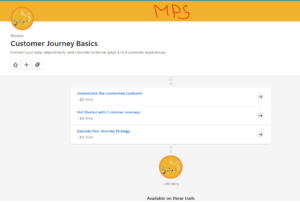In this article basically, we will learn about Customer Journey Basics, customer journey map examples, customer journey examples, customer journey definitions, customer journey b2b, customer journey analytics, customer journey analysis, customer journey cycles, etc.
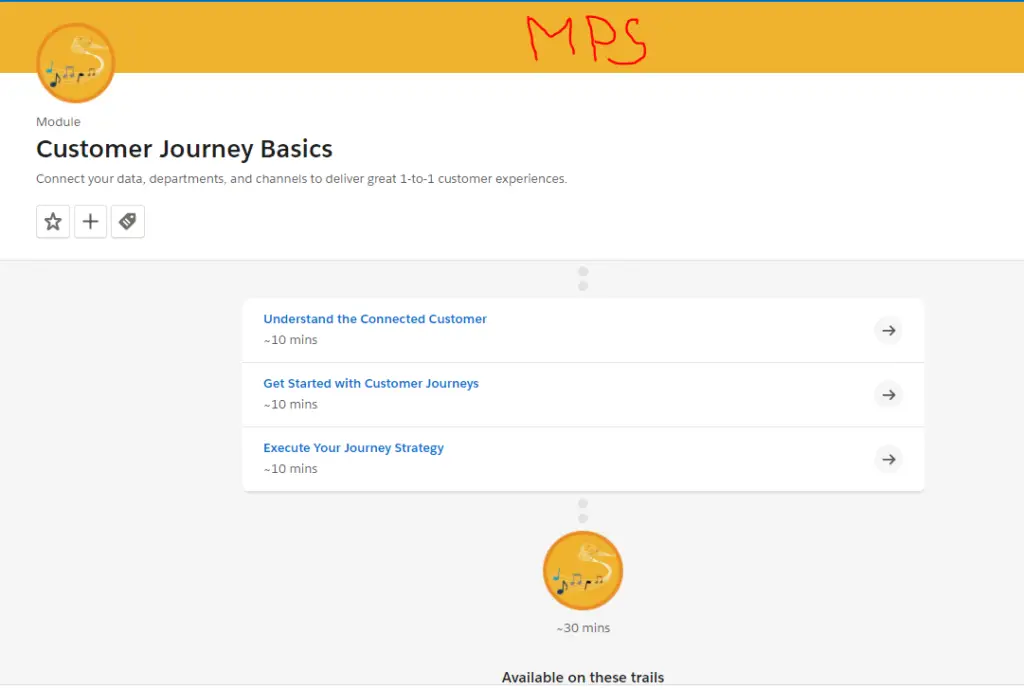
#1.Understand the Connected Customer
Q1)What latest capability has raised the bar on what’s considered “innovative”?
I)Email
II)AI
III)Mobile
IV)Social
[bg_collapse view=”button-green” color=”#4a4949″ expand_text=”Show Answers” collapse_text=”Hide Answers” ]
II)AI
[/bg_collapse]
Q2)What do customers expect from a company’s communications that helps to drive their brand loyalty?
I)Personalization
II)Online communities
III)Service agents’ awareness of sales interactions
IV)Self-service tools
[bg_collapse view=”button-green” color=”#4a4949″ expand_text=”Show Answers” collapse_text=”Hide Answers” ]
I)Personalization
[/bg_collapse]
Q3)What percentage of customers have stopped buying from a company when they feel that a competitor provides a better experience?
I)10%
II)37%
III)57%
IV)85%
[bg_collapse view=”button-green” color=”#4a4949″ expand_text=”Show Answers” collapse_text=”Hide Answers” ]
III)57%
[/bg_collapse]
Q4)What creates the customer experience gap?
I)Siloed Data, Channels, and Departments
II)Siloed Content, Teams, and Devices
III)Disjointed customer journeys
IV)A river
[bg_collapse view=”button-green” color=”#4a4949″ expand_text=”Show Answers” collapse_text=”Hide Answers” ]
I)Siloed Data, Channels, and Departments
[/bg_collapse]
#2.Get Started with Customer Journey basics
Q1)What is a customer journey?
I)Guided learning paths that chart a customer’s course
II)A series of steps a customer goes through during a touchpoint with a company
III)A series of sprints in a marathon
IV)A process of gathering data/information on your customers
[bg_collapse view=”button-green” color=”#4a4949″ expand_text=”Show Answers” collapse_text=”Hide Answers” ]
II)A series of steps a customer goes through during a touchpoint with a company
[/bg_collapse]
Q2)Which of the following does a customer journey strategy positively impact?
I)Customer engagement
II)Revenue growth
III)Customer satisfaction scores
IV)A, B, and C
E.A and C
[bg_collapse view=”button-green” color=”#4a4949″ expand_text=”Show Answers” collapse_text=”Hide Answers” ]
IV)A, B, and C
[/bg_collapse]
Q3)Which of the following helps you meet the expectations of the empowered consumer?
I)Keep your customer data siloed
II)Personalize everywhere with artificial intelligence
III)Engage across the entire consumer journey
IV)A and B
v)B and C
[bg_collapse view=”button-green” color=”#4a4949″ expand_text=”Show Answers” collapse_text=”Hide Answers” ]
v)B and C
[/bg_collapse]
Q4)What are the customer life cycle stages?
I)Awareness, Acquisition, Onboarding, Engagement, Retention, and Advocacy
II)Awareness, Acquisition, Onboarding, Communication, Retention, and Growth
III)Introduction, Growth, Maturity, and Decline
IV)Development, Introduction, Growth, Maturity, Saturation, and Decline
[bg_collapse view=”button-green” color=”#4a4949″ expand_text=”Show Answers” collapse_text=”Hide Answers” ]
I)Awareness, Acquisition, Onboarding, Engagement, Retention, and Advocacy
[/bg_collapse]
#3.Execute Your Journey Strategy
Q1)What is the purpose of setting a goal for your journey?
I)Gotta start somewhere
II)To decide what data you need
III)To work backward
IV)To focus your efforts
[bg_collapse view=”button-green” color=”#4a4949″ expand_text=”Show Answers” collapse_text=”Hide Answers” ]
IV)To focus your efforts
[/bg_collapse]
Q2)When auditing today’s customer experience, which of these should you do?
I)Document everything.
II)Google your brand and market.
III)Start a mass email list.
IV)A and B
[bg_collapse view=”button-green” color=”#4a4949″ expand_text=”Show Answers” collapse_text=”Hide Answers” ]
IV)A and B
[/bg_collapse]
Q3)What question should you ask to check your data’s quality, accessibility, and completeness?
I)How many people have access to the data?
II)How easy is the data to access and use?
III)How many categories of data are available?
IV)No questions are needed.
[bg_collapse view=”button-green” color=”#4a4949″ expand_text=”Show Answers” collapse_text=”Hide Answers” ]
II)How easy is the data to access and use?
[/bg_collapse]
Q4)Which of these is an example of in-journey content?
I)Downloadable content
II)Web content
III)Interactive content
IV)Social content
[bg_collapse view=”button-green” color=”#4a4949″ expand_text=”Show Answers” collapse_text=”Hide Answers” ]
IV)Social content
[/bg_collapse]
Q5)What are the four pillars to create a customer journey?
I)Audience, data, content, and channel
II)Attract, confirm, nurture, and close
III)Email, mobile, social, and ads
IV)Marketing, service, sales, and commerce
[bg_collapse view=”button-green” color=”#4a4949″ expand_text=”Show Answers” collapse_text=”Hide Answers” ]
I)Audience, data, content, and channel
[/bg_collapse]
People also ask:
what are customer journey analytics?
Customer journey analytics are a way for companies to get a better understanding of their customers. They provide an opportunity for marketers to analyze where their customer’s attention is going, and where they are losing it. The customer journey analytics tool that I like to use the most is Google Analytics, which is free.
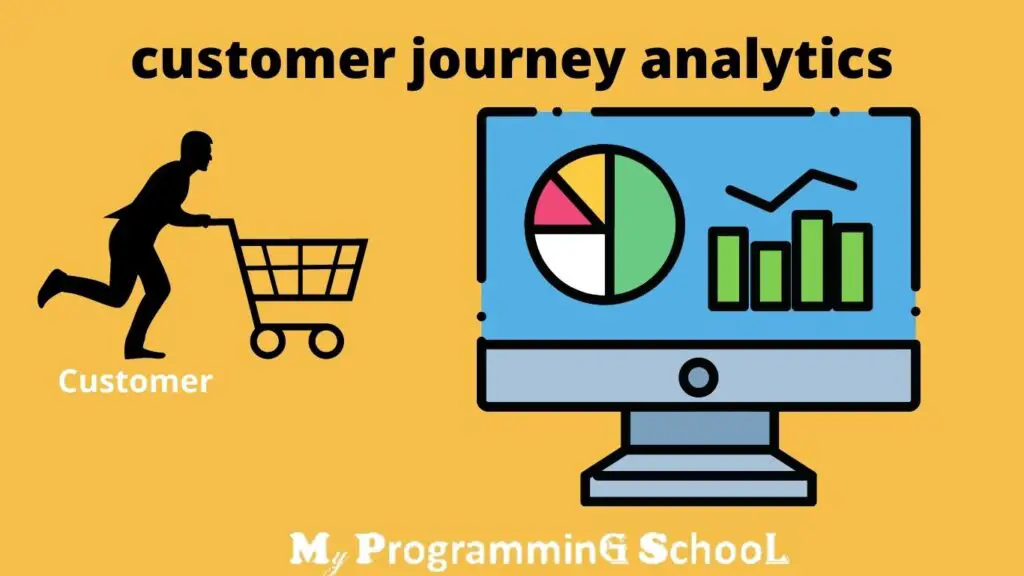
By studying the journeys of your most loyal customers, you can see what they are doing on your website, how long they stay there, and what they click on. You can also see how they interact with social media.
There are two main methods for creating a customer journey analytics model: top-down or bottom-up. In a top-down model, you analyze core touchpoints and identify user needs at each stage of the process. In a bottom-up model, you start at the endpoint and work backward through the steps users have taken to reach that point. Both methods are useful, but it’s best to start with a top-down approach and then add details from the bottom up.
How can you define a customer journey?
The Customer Journey Mapping trend is one of the most important ones that brands should follow this year. With everyone focusing on content marketing and creating better customer experiences, mapping the customer journey allows you to see in a visual way where your customers struggle, and how they feel when they interact with your brand.
Customer journey mapping will allow you to discover what your customers are thinking, and how they feel during each step of their journey. This can help you optimize your sales funnel by identifying key points where people drop off, or where they are struggling to understand certain products or services.
what makes a good customer journey?
A good customer journey will help you build a long-lasting relationship with your customers. It is the process of guiding them through your product and making them a fan. Take Uber, for example, they have a great customer experience. You can track your driver on the map in real-time, you are notified when they arrive, it’s easy to pay, they take care of everything.
Here are some elements that make up a great experience:
- 1. Be transparent about what you do and why you do it
- 2. Show that you care about the people who use your product and not just their money
- 3. Make it easy for people to use your product and understand what they get in return
- 4. Be consistent with your messaging and branding
- 5. Show that you are a company that is willing to adapt to the needs
What are the 5 stages of customer journey?
The customer journey is a marketing concept that maps out the steps a customer takes from finding your business to making a purchase. The term “customer journey” was coined by marketers who wanted a more thorough way to understand how visitors interacted with a company’s website, social media channels, and other types of marketing initiatives.
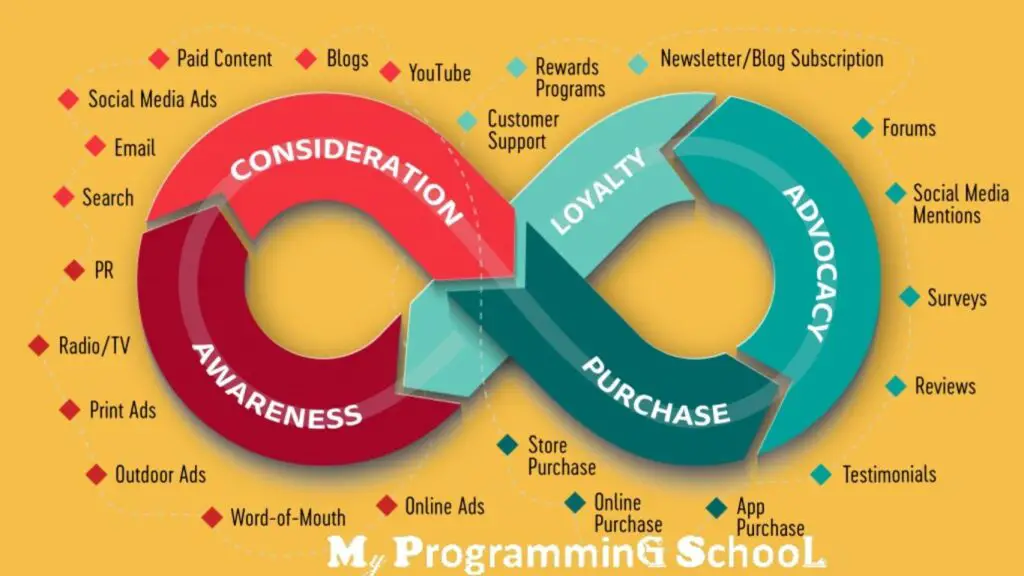
There are five stages to the customer journey: Awareness, Consideration, Advocacy, Purchase, and Loyalty. Most companies want customers to move through these stages as quickly as possible because each stage represents an opportunity to make money.
How to improve customer journey?
The customer journey is a common metric used by businesses to track customer interaction. The idea is to keep your customers happy by making it easy for them to find your brand and products, and then to provide them with a seamless experience so there are no surprises in the process. This can be done through live chat, email marketing, social media, surveys, etc.
If you want to learn more about creating an improved customer journey and experience, check out this infographic from Branch. It explains how businesses can use technologies like chatbots and survey software to improve the customer experience.
how to create customer journey?
A customer journey map is a visual story of the steps that customers take when interacting with your brand. It maps out each touchpoint between your company and the customer. This includes all of the different resources that they may use to interact with your brand.
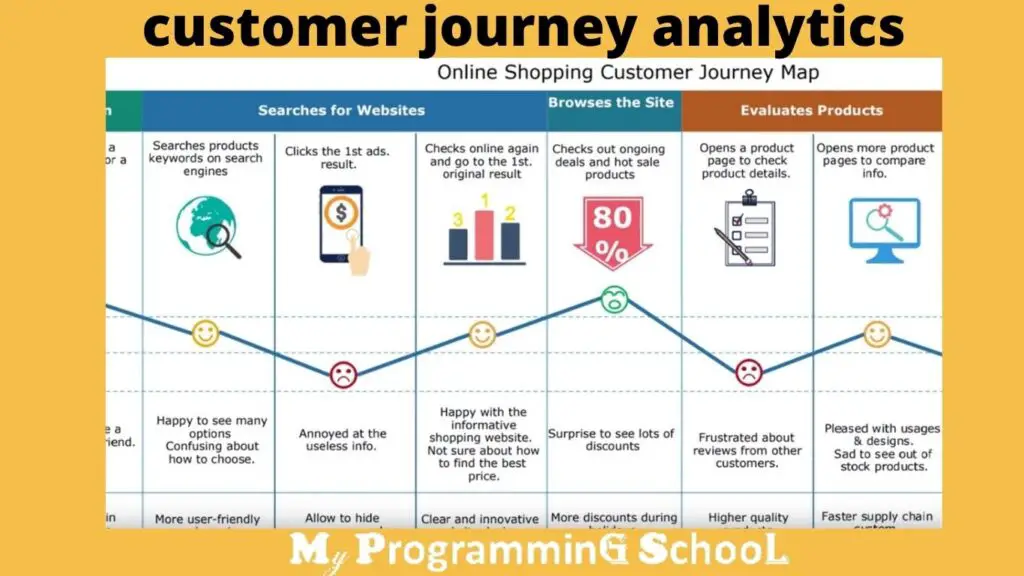
These touchpoints include anything from print ads, social media posts, phone calls, emails, in-store interactions, or any other interaction they may have had with your company. A customer journey map allows you to see what marketing channels are working best for your business and refine them accordingly.
how to create a customer journey map?
A customer journey map outlines the path that customers or clients take in order to arrive at your company and make a purchase. The purpose of a customer journey map is to show how each customer sees your business, what they are looking for, and where they go when they want to buy something.
A consumer journey map can be a useful tool for business owners to help them understand their customers better and increase sales. The key is to use it correctly by focusing on the consumer’s experience.
customer journey map example
A customer journey map outlines the critical stages a customer goes through during his/her relationship with your company. This is done by creating a visual representation of each stage and mapping out all the touchpoints along with the metrics that define the stage.
Here is an example of a customer journey map for a travel service provider:
# Topic: social media advertising using facebook ads
# The above customer journey map shows the path a customer takes from being aware of the brand to making a purchase.
A marketing mix is a set of four controllable variables that marketers can use to influence consumer behavior and achieve theirorganizational objectives. The four variables are product, price, promotion and place. A marketing mix is used to make decisions about the marketing of a product or service in order to meet the needs of customers and achieve business goals.
20 customer journey map tool | customer journey map creator
Customer journey mapping is a popular concept among companies like IBM and Google that have adopted it to improve their business. The idea behind customer journey mapping is to segment customer activity into stages, and then develop strategies to move potential customers through those stages more quickly, with the goal of increasing customer acquisition and retention.
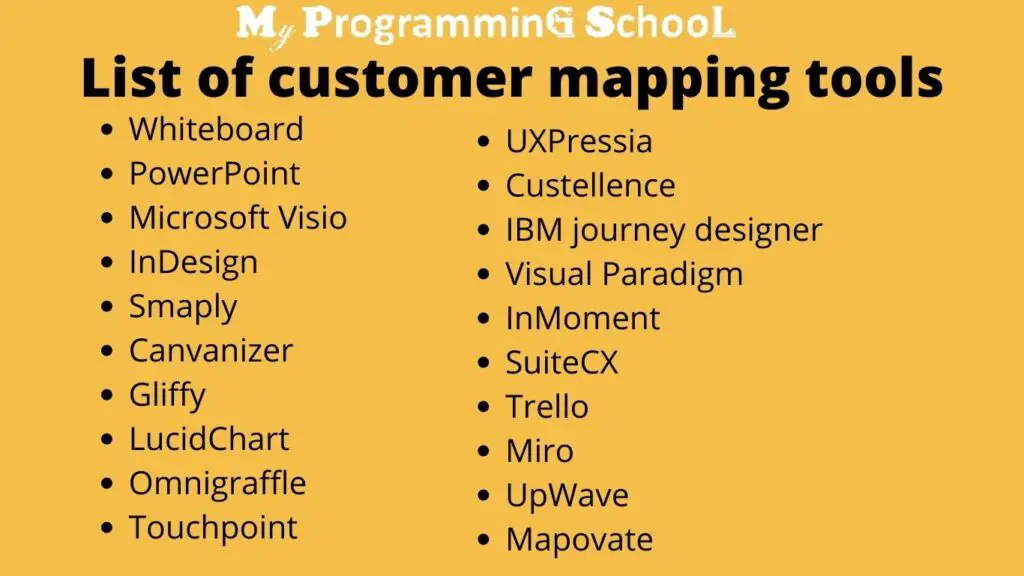
There are many customer journey map tools available for small businesses to use. Here are some of the top ones:
- #1 A Whiteboard
- #2 PowerPoint
- #3 Microsoft Visio
- #4 InDesign
- #5 Smaply
- #6 Canvanizer
- #7 Gliffy
- #8 LucidChart
- #9 Omnigraffle
- #10 Touchpoint
- #11 UXPressia
- #12 Custellence
- #13 IBM journey designer
- #14 Visual Paradigm
- #15 InMoment
- #16 SuiteCX
- #17 Trello
- #18 Miro
- #19 UpWave
- #20 Mapovate
customer journey map b2b
The journey of a B2B customer is often complex and involves several people from different departments. They will go through different stages of the buying process, requiring information and guidance at every step. What’s even more important, during their journey they will be in contact with various marketing channels and tools: email, website, social media, content marketing, advertising and many others. The customer journey map is the solution to all the problems.
customer journey map benefits
A customer journey map is a visual representation of a customer’s interactions with a business, brand or service. It represents the steps that customers go through when interacting with a particular business or brand.
A customer journey map can be used to:
- * Identify touchpoints on the customer journey that are successful and enjoyable for customers.
- * Identify ways to improve the customer journey by giving feedback to your customers about their experience.
- * Create a visual representation of the customer journey to help you and your team understand how customers interact with your business.
- * Understand the customer’s perspective on their experience with your business
customer journey mapping workshop
Sensible Marketing offers a free customer journey mapping workshop for companies who want to increase the value of their marketing.
The workshop can be customized to fit your business, and will be run by Sensible Marketing founder Michael Copeland.
The workshop creates a framework that allows you to:
- 1. Understand your customers better than ever before.
- 2. Find out what they’re looking for when they visit your site.
- 3. Identify opportunities for improvement that you hadn’t noticed before.
Where do you want to drive traffic? (blog, sales page, etc.)
Related Articles:
- What Is Audience Segmentation Strategy, Analysis, Tools With An Example
- Quick Start: Deploy A Java App On Heroku
- General Courses: Accountability And Delegation
- General Course: Blockchain Basics, Bitcoin, Cryptocurrency, Technology, Types
- General Courses: Culture Of Feedback, Types, Benefit, Important
- General Courses: Cyber Resilience
- General Courses: Demo Storytelling
- General Course: Digital Banking Basics-MPS
- General Courses: Demo Delivery Essentials
- General Courses: Google Analytics Basics
- General Courses: Great Management
